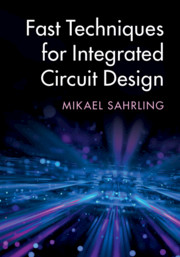Book contents
- Fast Techniques for Integrated Circuit Design
- Reviews
- Fast Techniques for Integrated Circuit Design
- Copyright page
- Dedication
- Contents
- Preface
- 1 General Guidelines in Estimation Analysis in Integrated Circuits
- 2 Basic Amplifier Stages
- 3 Higher Level Amplifier Stages
- 4 Electromagnetism: Fundamentals
- 5 Electromagnetism: Circuit Applications
- 6 Electromagnetic Field Simulators
- 7 System Aspects
- Book part
- Index
- References
3 - Higher Level Amplifier Stages
Published online by Cambridge University Press: 08 August 2019
- Fast Techniques for Integrated Circuit Design
- Reviews
- Fast Techniques for Integrated Circuit Design
- Copyright page
- Dedication
- Contents
- Preface
- 1 General Guidelines in Estimation Analysis in Integrated Circuits
- 2 Basic Amplifier Stages
- 3 Higher Level Amplifier Stages
- 4 Electromagnetism: Fundamentals
- 5 Electromagnetism: Circuit Applications
- 6 Electromagnetic Field Simulators
- 7 System Aspects
- Book part
- Index
- References
Summary
The estimation analysis method is described in the context of sophisticated amplifiers. The purpose is to convince the reader of the usefulness of the technique by whetting their appetite with more complex systems. We start with a simple five transistor circuit and move on to comparators and cascaded amplifiers. All these are studied by applying simplifying assumptions followed by analytical solutions. Noise analysis and appropriate scaling techniques are also described in detail. The chapter further contains design examples and exercises to familiarize the reader more deeply with the methodology.
- Type
- Chapter
- Information
- Fast Techniques for Integrated Circuit Design , pp. 31 - 49Publisher: Cambridge University PressPrint publication year: 2019



